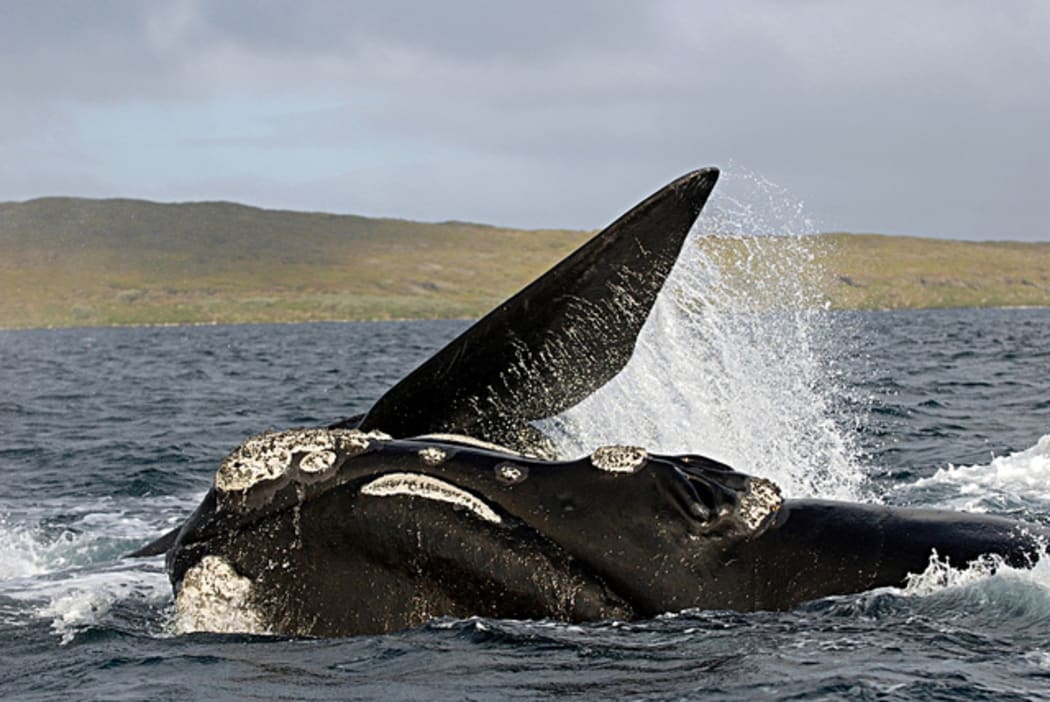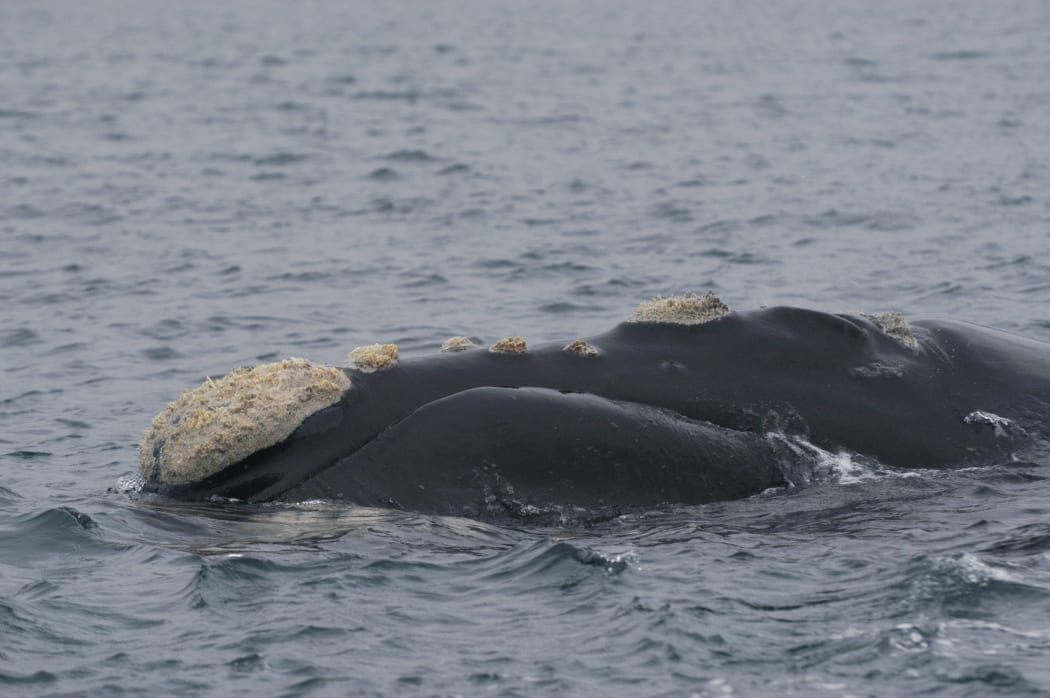New research shows that New Zealand’s southern right whales were nearly wiped out a century ago.
New Zealand was once home to about 30,000 southern right whales. A century of human hunting drove the population to the brink of extinction, and by the early 1920s there were probably just 15-20 mature female southern right whales surviving in a New Zealand population that may have numbered as few as 110 individuals.

Southern right whale breaching at subantarctic Auckland Island. Photo: Oregon State University
These are the key findings in a scientific paper, published today in the Royal Society Open Science journal, looking at the impacts of human hunting on southern right whales in New Zealand.
Dr Jennifer Jackson, from the British Antarctic Survey, and her colleagues looked at whaling logbooks and fishery records for New Zealand waters and offshore pelagic whaling grounds to come up with a detailed catch history, and they used this in a number of different population models.
The paper estimates that between 35 000 and 41 000 southern right whales were killed in New Zealand waters between 1827 and 1980.
Over 80 percent of the whales were killed in a period of intense early whaling, between 1830 and 1850, but the total also includes illegal Soviet whaling carried out in the 1960s, when 372 southern right whales from the southwest Pacific population were killed.
No southern right whales were seen in New Zealand mainland waters for over 35 years, between 1928 and 1963.
A small population of whales survived around subantarctic Auckland and Campbell islands, and today southern right whales are slowly returning to former calving grounds around mainland New Zealand.
Dr Will Rayment from the Department of Marine Sciences at the University of Otago says “the study reveals just how close the population came to being wiped out altogether."
"We should be very thankful that a tiny remnant population remained and has slowly been increasing in numbers since the ban on commercial whaling. But we should also be mindful that as the population recovers, southern right whales will increasingly be impacted by human activities.”
New Zealand’s southern right whale population had recovered to about 2200 whales by 2009, and it is growing at about 7 percent each year. This is approximately half the rate of growth calculated by the International Whaling Commission for all southern right whale populations.

Southern right whales can be individually identified by the patterns of rough white callosities on their head. Photo: Will Rayment / University of Otago
The authors used several lines of evidence to come up with their estimates, including a recent survey of population structure which showed that there are just 12 maternal lineages, or mitochondrial DNA haplotypes, represented in southern right whales that live around New Zealand’s mainland and subantarctic islands, as well as in southeast Australia where there is a small winter calving area that is effectively part of the wider New Zealand population. This is a result of the small number of females that survived the population bottleneck.
Dr David Thompson from NIWA said “although Jackson’s work shows that the current New Zealand population is only about 12 percent of pre-exploitation levels, they also suggest that in 50 years’ time this value could be as high as 95 percent.”
“Given that whales are now fully protected in New Zealand,” says Dr Thompson, “ I would like to think this prediction proves accurate and that I’m not too old to see southern right whales spending their winter in Wellington harbour in the not too distant future."
Southern right whales are found around South Africa as well as Argentina, South Australia and New Zealand’s subantarctic islands and mainland. Twelve distinct southern right whale winter calving grounds have now been identified, and these vary in size and how connected the whales are with other groups.
“An integrated approach to historical population assessment of the great whales: case of the New Zealand southern right whale” by Jennifer Jackson et al was published in the Royal Society open science journal 3:150669.

